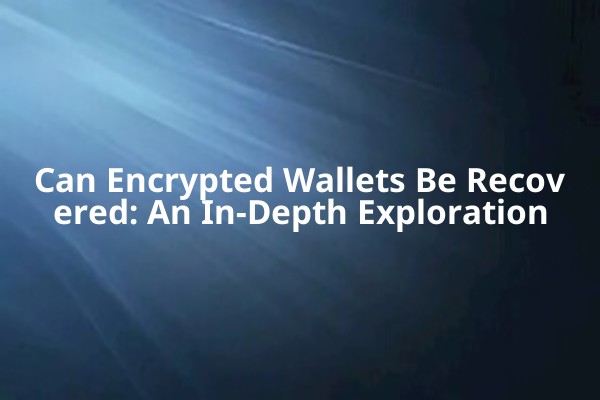




In today's rapid development of digital currencies, crypto wallets, as important tools for storing and managing virtual assets, are increasingly coming into people's view. However, as the use of crypto wallets becomes more widespread, the question of whether wallets can be recovered has also attracted widespread attention. This article will explore this topic in depth, covering related aspects such as technology, operation, and security, to help you better understand the recovery mechanisms of crypto wallets.
A crypto wallet is a tool for storing the private keys of cryptocurrencies (such as Bitcoin, Ethereum, etc.). They allow users to send and receive cryptocurrencies and view their balances. Crypto wallets can be software wallets, hardware wallets, or paper wallets, each with its own characteristics.
A crypto wallet operates by generating a pair of public and private keys. The public key is used to receive funds, while the private key is used to sign transactions, proving the owner's control over the managed funds. The private key must be properly safeguarded, as anyone with access to it can have full control over the corresponding funds.

The recovery of an encrypted wallet usually takes place when a user loses access. This may be due to device failure, forgotten passwords, or malicious attacks. Recovering the wallet can help users retrieve lost assets.
Recovering an encrypted wallet usually relies on the following methods:
Most wallets generate a backup phrase when created, usually consisting of 12 to 24 random words. If a user loses their wallet, they can recover the wallet and its contents by entering this set of backup phrases.
If the user has kept a backup of the private key, they can also restore the wallet directly by entering the private key. It is important to note that protecting the private key is extremely important, as any leakage may result in asset theft.
For hardware wallets, there is usually a backup phrase or recovery code. If the device is lost, as long as the user has the backup information, they can restore their assets on a new hardware wallet.
Although there are various recovery methods, there are also risks involved in the recovery process. For example, entering an incorrect backup phrase or private key can result in the wallet being unrecoverable. In addition, performing recovery operations over an insecure network may provide opportunities for hackers.
When performing recovery operations, it is crucial to choose a secure environment. Avoid operating on public Wi-Fi to reduce the risk of information theft.
Make sure to use the official version of the cryptocurrency wallet software to avoid potential risks from third-party applications. Only official software can provide the highest level of security for your assets.
Having a basic understanding of cryptography can help users make more informed decisions when recovering their wallets, thereby avoiding unnecessary losses.
If a user forgets to back up the recovery phrase when setting up the wallet, and there is no other way to recover the wallet, the assets will be lost forever.
If the private key is leaked, hackers may transfer assets without the user's knowledge. This situation can easily lead to the irrecoverability of the user's wallet.
For users who rely on hardware wallets, if the device is damaged and the data is not backed up in time, it may result in the irrecoverable loss of assets.
In a certain case, a user stored tens of thousands of dollars worth of Bitcoin in their wallet. After losing the device, they promptly used the backup phrase to successfully restore the wallet on another device, thereby recovering their assets.
In contrast, another user failed to properly safeguard their backup phrase and attempted to recover their wallet with missing information after a device malfunction. As a result, their assets were lost forever, serving as a reminder to everyone of the critical importance of backing up.
If users lose their backup phrases and private keys, experience hardware damage, or forget the original creation information, the wallet cannot be recovered.
Backup information should be stored in secure locations, such as using encrypted storage solutions or distributing it across multiple secure locations, to reduce the risk of a single point of failure.
Generally speaking, using third-party software or tools carries certain risks. It is recommended that users try to use officially recommended methods for recovery to maximize the protection of their assets.
The steps to create a secure wallet include using a strong password, enabling two-factor authentication, regularly updating software, and properly backing up the recovery phrase and private key.
Although backing up the recovery phrase is an important way to restore a wallet, users still need to ensure its security. Regularly changing wallet settings and taking care to prevent backup information from being leaked are necessary to ensure safety.
Upon discovering that the wallet has been hacked, immediately transfer the wallet to a new one to protect your assets, and change all related personal security settings to ensure no further losses.
The recovery mechanism of encrypted wallets is an important component in the world of cryptocurrencies. Understanding this knowledge will help users better manage their virtual wealth while ensuring the security of their assets. By staying vigilant, regularly backing up, and learning relevant technical knowledge, every user can effectively safeguard the security of their digital assets.